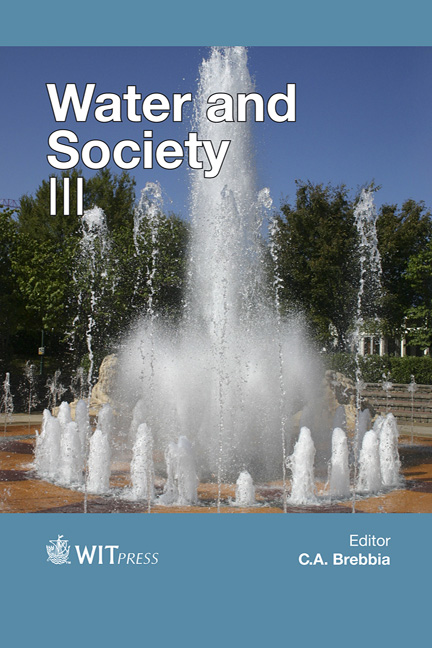The Impact Of Urban Growth On Ground Water Salinity Rates On The Lebanese Coast
Price
Free (open access)
Transaction
Volume
200
Pages
11
Page Range
249 - 259
Published
2015
Size
350 kb
Paper DOI
10.2495/WS150211
Copyright
WIT Press
Author(s)
N. Fayssal, K. Slim
Abstract
For the purpose of monitoring the seawater intrusion on the Lebanese coast, a selected region south of Beirut – Chouf coastal region from Naemeh to Remaileh – was chosen to be studied. The region is witnessing an urban sprawl since the nineties and the water supply by the government water network is insufficient to meet this increase in the demand due to fluctuation in surface water availability affected by climate change. This enhanced the dependence on the underground water to be the only source of water in many sites where it is used for multiple purposes (agriculture, domestic and sometimes portable). 32 wells were chosen at different distances from the shore in order to track the extent of water intrusion into the underground water. Water samples were collected three times during the year, at a rate of one sample each 4 months, between wet season (spring 2014) and dry season (fall 2014). The collected water was tested for electric conductivity, TDS and chloride in order to evaluate their salinity status. The results obtained from the study showed that the sea water intrusion that was recorded during the 1980s in some sites extends to most aquifers of the entire region now. In comparison with old studies, salinity levels were doubled or tripled in certain tracked wells. Also the results showed that in a strip area of 1 km all along the shore, water wells have salinity rates between 1.5 ds/m and 5 ds/m (the majority being 3.4 ds/m during the wet season and 5 ds/m during dry season). These values are alarming in an agricultural area depending mostly on wells in their crop production with an expected increase in water demand for domestic use.
Keywords
underground water, seawater intrusion, salinity, Lebanese coast, water stress





